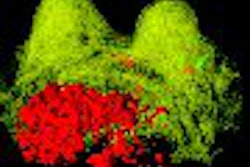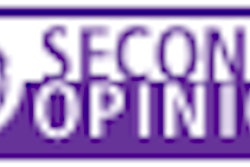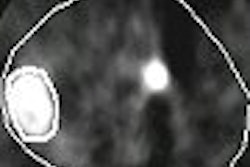Nuclear medicine is at a crossroads in the U.S., according to a newly published report by the National Academy of Sciences (NAS) National Research Council and the Institute of Medicine (IOM).
Entitled "Advancing Nuclear Medicine through Innovation," the report is the result of a 13-month investigation by a multidisciplinary team of experts in nuclear medicine. The report conveys a high level of optimism for future innovations and applications in nuclear medicine, but also reaches the sobering conclusion that these goals are unlikely to happen unless major funding changes occur for research and clinical trials, greater availability of radionuclides at a lower cost, changes in management and administration by federal government agencies, and an aggressive effort to reduce the current and future shortage of trained specialists and experts.
The report was produced by the Committee on State of the Science of Nuclear Medicine, which was formed at the request of the Department of Energy (DOE) and the National Institutes of Health (NIH) to review the state of nuclear medicine in response to discussions between the DOE and the Office of Management and Budget about the future scientific areas of research for the DOE's Medical Applications and Sciences Program. The project was allotted $700,000, and Dr. Hedvig Hricak, chairman of the department of radiology at Memorial Sloan-Kettering Cancer Center in New York City, was selected to chair the committee.
According to the report, near-term advances in nuclear medicine are expected to substantially accelerate, simplify, and reduce the cost of delivering and improving healthcare. The report recommends that research be focused on the following:
- The development of new radionuclide production facilities and technologies to reduce cost and increase availability
- The synthesis of new radiotracers to improve understanding of how specific organs function, especially brain chemistry and behavior
- The development of new technologies and hybrid imaging devices to improve disease diagnosis and treatment
- The development of targeted radionuclide therapeutics to implement personalized medicine based on an individual's genetic profile
- The use of nuclear medicine imaging as a tool to accelerate the development of new drugs at a lower cost, and treatments in conjunction with research programs.
However, these initiatives require money, material, and expertise, all of which have diminished in the wake of shrinking funds and commitments. In fiscal-year 2006, the U.S. Congress cut the budget of the Medical Applications and Sciences Program by 85%, which meant a reduction of $23 million for research projects in nuclear medicine. As a result, currently, there is no specific long-term commitment by any federal agency for maintaining nuclear accelerators, research reactors, or other high-technology infrastructure for nuclear medicine research and development.
Because of the long-term nature and cost of nuclear medicine R&D, federal funding is essential to sponsor and support research projects, according to committee member Dr. Peter Conti, a professor of radiology, biomedical engineering, and pharmacy, and director of the University of Southern California PET Imaging Science Center in Los Angeles. "To get us back to a baseline where we were 1.5 years ago, it is necessary to restore the $23 million," Conti explained.
"The loss of funding for nuclear medicine research in the U.S. Department of Energy budget has been a tremendous blow to -- most importantly -- our current and future patients and our field," said SNM president Dr. Alexander McEwan, director of oncologic imaging at Canada's Cross Cancer Institute in Edmonton, Alberta.
"This report confirms that funding for this nation's basic research program must be restored or future lifesaving diagnostic and treatment procedures could be lost to all Americans," he said. "From the perspective of the total U.S. budget, $23 million is budget dust, but it is the core amount that is needed for the basic study of nuclear medicine. This is probably 25% of what we need. An annual investment of $80 million to $100 million for research is more realistic to achieve the advances we feel are very feasible in the near term."
The report emphasizes that the very heart of all nuclear medicine procedures is the need for year-round, reliable availability of radionuclides. More than 70% of all procedures in nuclear medicine are based on technetium-99m, a radionuclide produced by individual generators that use material produced in reactors outside the U.S. Nearly all the enriched stable isotopes used in nuclear medicine are imported from suppliers outside the U.S.
DOE reactor and accelerator facilities are the primary source of exotic or less commonly used radionuclides. They not only are unable to meet current requirements by the research community, but production also has been limited by age-related degradation of the facilities and extended shutdowns for maintenance.
While medium-sized research reactors at universities provide research quantities of medical isotopes, the number has been in steady decline since the early 1970s. They also are subject to increasingly frequent maintenance shutdowns.
"The fact that there is no domestic source for most of the medical radionuclides used in day-to-day nuclear medicine practice is of great concern," Conti said.
The lack of dedicated U.S. accelerator and reactor facilities for year-round production of medical radionuclides for research limits the development and evaluation of new radiopharmaceuticals. Also compounding the problem is the fact that under U.S. law DOE reactors must recover all the costs involved in supplying radionuclides, a stipulation that has stifled research into radionuclide and radiopharmaceutical production and research.
To alleviate these impediments, the committee strongly recommends building a dedicated accelerator and funding an upgrade to a nuclear reactor. "Building a dedicated reactor along with providing for initial operating expenses will cost an additional $100 million," Conti said. He noted that France is funding such a project to provide isotopes for use in the European community.
The committee also recommends that the DOE should evaluate the option of a U.S.-based enriched isotope supply source.
Another area of great concern is supporting training programs in virtually all professional disciplines. "We don't have adequate training programs in the United States to encourage people who are doing radiology and nuclear medicine to move into the academic research setting," Conti said. "If we don't train the next generation of clinical scientists, we won't be able to do the clinical trials necessary to develop the new technologies. Our country will lose this expertise, and interest in this field could dwindle away, despite its promise."
The committee recommends an across-the-board investment in training programs. Conti estimates the cost to be $40 million to $50 million per year. The report bluntly notes that training has not kept pace with current demands in universities and industry.
Because of the scarcity of nuclear medicine imaging experts, radiochemists, and radiopharmicists, salaries are high. The issue of whether new entrants will be attracted to nuclear medicine is going to depend, in part, on job security, as well as new research. There is much concern that specialists-in-training will leave the U.S. to pursue the best job opportunities.
"Although the scientific opportunities have never been greater or more exciting, the infrastructure on which future innovations in nuclear medicine depend hangs in the balance," the report concluded. "If the promise of the field is to be fulfilled, a federally supported infrastructure for basic and translation research in nuclear medicine should be considered."
By Cynthia Keen
AuntMinnie.com contributing writer
October 15, 2007
Related Reading
Report calls for more NM research funding, September 21, 2007
SNM updates technologists' scope of practice, September 7, 2007
New CMS rules could add to radiology's reimbursement woes, August 1, 2007
RT wages growing more slowly, ASRT finds, July 26, 2007
CMS reconsiders coverage for new PET uses, June 26, 2007
Copyright © 2007 AuntMinnie.com



















